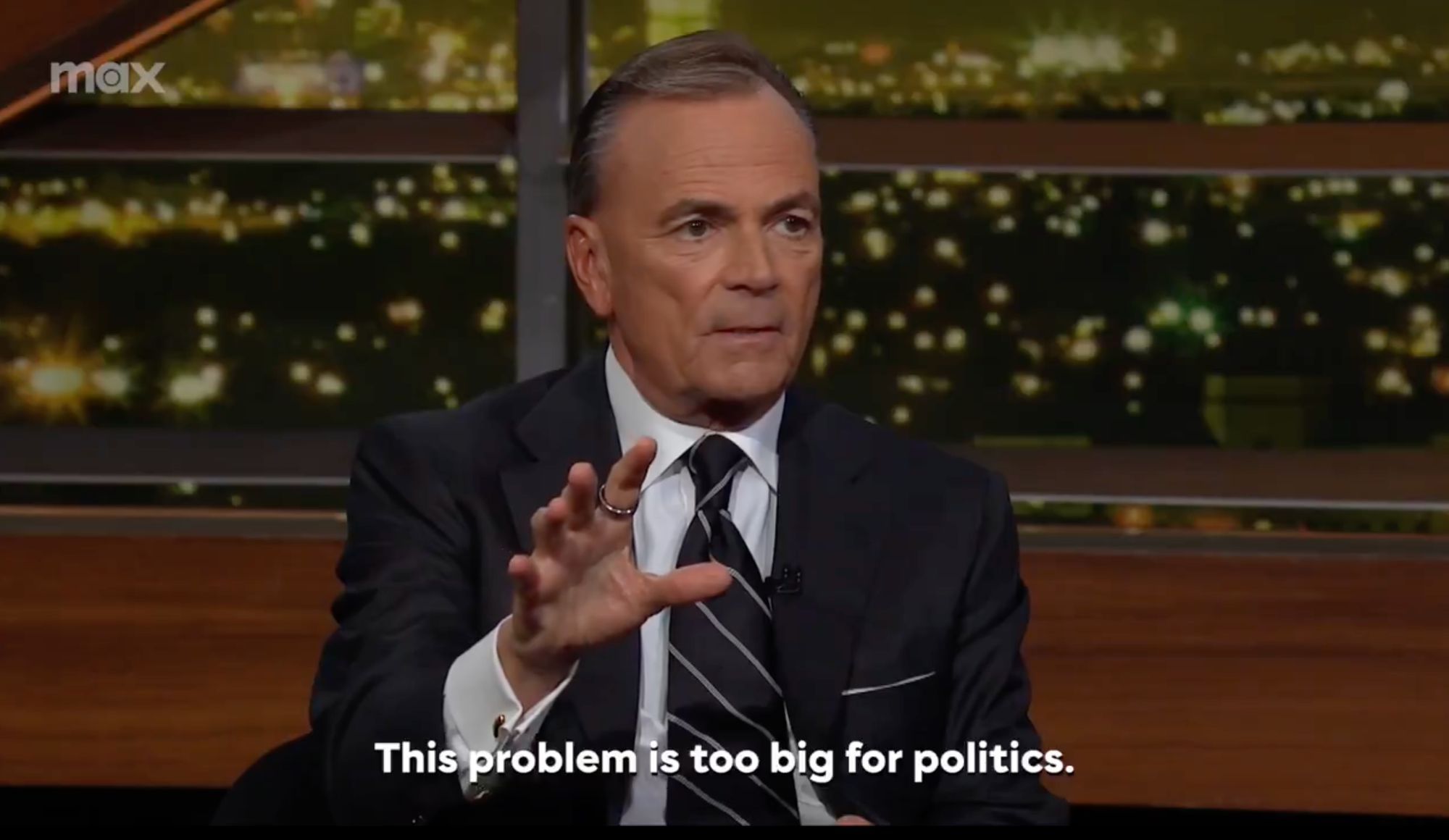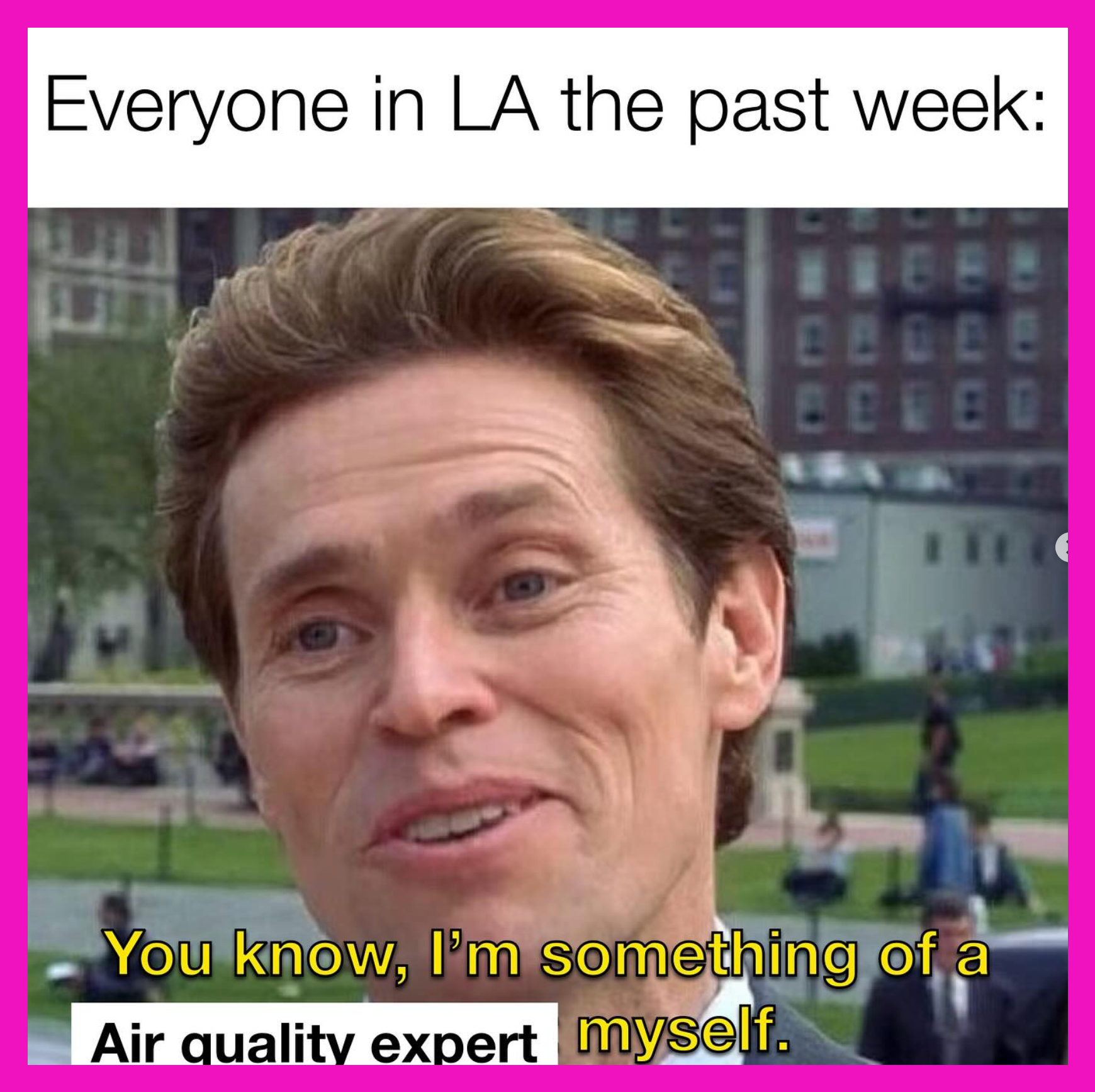The Grand scheme
This is the downtown that Frank Gehry wanted. When will LA's leaders give it to us?
In the midst of a climate disaster, schools must become beacons of resiliency in every community

On Wednesday, January 8, I was awakened at 5 a.m. by the smell of the Eaton Fire burning 15 miles away. I grabbed my phone from the bedside table and pulled up the text channel where I receive LAUSD notifications. Despite the state of emergency declared 12 hours before, there was nothing about closures — not even an update from the district on the conditions I had stayed up until 2 a.m. to watch, horrified, on local news feeds while other district closures flashed across the bottom of the screen. In the absence of official communications, the parent chats lit up: Are we supposed to go to school?
Some LAUSD staff were already making their way to school sites, navigating power outages, downed trees, and blocked streets. Others couldn't get to work as they were busy evacuating their own homes. As administrators juggled staffing shortages, parents received confirmation at 10:15 a.m. that some schools were, in fact, shutting down, resulting in a chaotic dismissal process. Soon the full story became clear: schools had only been closed after the unions exerted pressure. "This lack of planning underscores a broader crisis," UTLA vice president Julie VanWinkle wrote at Jacobin. "Our schools are woefully unprepared for the escalating challenges of the climate crisis, and our kids are paying the price."
At a debriefing with the school board, LAUSD Superintendent Alberto Carvalho said he made decisions "according to the guide" to keep schools open based on AQI indicators alone — which, as we all know by now, we're not supposed to do. But the emergency manual for "wildfire" was clearly insufficient. Fires and smoke aside, the region had suffered widespread impacts from hurricane-force winds which, alone, should have triggered a district closure. When an actual hurricane made landfall in LA in 2023, schools had remained closed for a day so facility managers could carefully inspect every site before reopening. The parent advocacy group Parents Supporting Teachers, which has about 30,000 members on Facebook, is now calling for Carvalho's removal: "While we continuously hear the refrain that the District's top priority is safety — this was once again proven false under Carvalho." (I talked more about this on the emergency episode of LA Podcast.)

What's wild about all this is that I took my kids to school that morning knowing the air is cleaner inside their classrooms than in our living room thanks to new air filtration systems installed during COVID. That day, for the few hours it was open, our school effectively served as a smoke respite center to protect their young lungs. Maybe, I thought later, school should have actually stayed open so both staff and families with poorly insulated homes like mine could hunker down. As I've written before, it's becoming more and more clear that schools must become beacons of resiliency in every community in the midst of a climate disaster. And that includes everyday climate disasters, too. It's why our schoolyards need cisterns for capturing stormwater and bioswales to remediate urban runoff and microforests to protect neighborhoods from extreme heat.
Although public schools are chronically underfunded, we do actually have money to make these changes now. The two school bond measures that voters approved in November — one for the state, one for LAUSD — will funnel billions into facility upgrades. This week, LAUSD announced funding for new climate adaptation projects, including updates to emergency procedures. Hopefully that means throwing away the outdated manual and writing a new one. Parents near burn areas aren't getting good answers about how schools are being cleaned and tested for reopening. I spoke with one parent at Paul Revere Middle School, which is about a half-mile from the Palisades Fire perimeter. Upon returning to a school they were assured was safe, students found ash in their lockers. I'm also getting questions about how soils, sand, and garden beds should be cleaned and tested in schoolyards and playgrounds. Providing this guidance immediately should have been a priority for school board members.
Because we are truly living in unprecedented times, LAUSD families suffering through the aftermath of the fires now have yet another emergency to navigate. After the Trump administration declared schools are no longer off limits for ICE raids, LAUSD moved quickly to protect the largest undocumented immigrant population in the country. Districtwide, schools are handing out Immigrant Legal Resource Center "red cards," providing extensive legal resources, and training teachers, staff, and parents on how to assert their rights. High school students are staging walkouts; the fear in LA is palpable. But on this front — and also thanks to union organizing — LAUSD leadership has been exceptional, passing swift policy to ensure that the district remains a safe place for immigrants. LA is now confronting a polycrisis and, once again, LAUSD is on the frontlines of defense. More than ever, our public schools must become sanctuaries to protect us from whatever catastrophe awaits us. 🔥

Rick Caruso launched his rebuilding nonprofit named Steadfast LA, which is going to look great plastered in the empty Lululemon windows of his Palisades mall. Despite his insistence that "this is not a time for politics," Caruso immediately went on the Joe Rogan Experience to say he plans to run for office again, although "whether it's the governor, whether it's the mayor," he doesn't know quite yet. In a factually challenged interview — Caruso said the fires have made 180,000 more Angelenos homeless, which is not true, that's the total number of people who were under evacuation orders on January 9 — Caruso also praised "successful builder" Donald Trump, saying "I'd love for him to give a blueprint to the city of LA and say, here are the 10 things you need to do." (I'm old enough to remember when Caruso said the January 6 insurrection was the reason he became a Democrat.) Even after talking with Rogan for 82 minutes, Caruso's vision remains thin on substance — except for his idea to underground power lines; this is a great job for Caruso, do it citywide! — and an 800-word essay divided up into seven awkwardly kerned images offers few additional clues, except that he wants rebuilding done fast. Although Caruso's nonprofit was originally reported to be focusing on the Palisades, the announcement says he's "committed to revitalizing" Altadena as well. Gotta keep those potential votes for governor coming.
LA's field of recovery czars is getting even more crowded. I naively thought Caruso might be the final entry, but just as I was about to hit publish, here comes yet another rebuilding nonprofit: the Department of Angels, led by California Community Foundation's Miguel Santana and Evan Spiegel, co-founder of Snap (which one could argue singlehandedly destroyed another LA beachside community). These join the Gavin Newsom-assembled billionaire boys club LA Rises, headed up by LA28 chair Casey Wasserman, while yet another wealthy developer, Steve Soboroff, serves as "chief recovery officer" for LA city by Mayor Karen Bass. There is one promising community-focused effort: the Altadena Recovery Commission being organized by LA County Supervisor Kathryn Barger. One might say the best way to address LA's fragmentation might be for all these efforts to consolidate and coordinate around a singular vision — but as I noted last week, that's not going to happen as long as the rich and powerful people leading them are the same rich and powerful people who got us into this mess in the first place.
As Elon Musk implodes our democracy, let's reminisce about his LA legacy of steamrolling local elected officials into approving his unregulated car holes a decade ago. While Musk continues to tunnel under Vegas with little oversight, the tech bro fever dream of the Boring Company is alive in Southern California. After the Boring Company dramatically underbid and and eventually ghosted the Ontario Airport, the San Bernardino County Transportation Authority is still pursuing low-capacity car holes that would connect the terminal to the Rancho Cucamonga Metrolink station — with the goal of being ready for Brightline West's arrival! Sign up for updates from Inland Empire Urbanists to keep tabs on this project. I keep thinking about how Musk could have spent all this time and energy burying our power lines and probably saved a bunch of lives.
Can LA still expand its convention center by 2028? During the last few months of 2024 the city spent $54 million for pre-construction work to evaluate whether or not LA should complete a $1.4 billion expansion to the world's most expensive table tennis venue by 2028. Well, the city's assessment is finally out, and the outlook is bleak: due to the fires, the report reads, "the work remaining... cannot be completed in the time available to ensure completion." On one hand, we are so screwed if the city is unable to juggle a single high-priority infrastructure project with fire recovery. On the other hand, having an expanded convention center is suddenly more important than ever to help the city recover from the economic impacts of the firestorm. Reminder that the convention center was supposed to be redone two decades ago as part of a big private deal to bring an NFL team to downtown — championed by none other than Casey Wasserman. Maybe he can work on fixing the convention center in his new role?

Welcome to all my new air quality subscribers! One month out from the start of the fires and I can't believe all the misinformation I'm still seeing out there. Let's combat this problem by sharing evidence-based facts. The Caltech Science Exchange hosted the very best webinar I've seen on air quality and includes recent testing data for a wide range of toxic compounds — if you only watch one webinar, make it this one. Caltech's resource page is also excellent. For people worried about airbone lead, look at these readings from an aerosol monitoring site before, during, and after the fires. I can also recommend two other webinars you should watch: the Coalition for Clean Air's "The Fires 2: Hazardous Waste, Air Quality & Water Safety," which also includes NRDC's Mark Gold on ocean quality; and KCRW's "Wildfire Cleanup Information Panel," which includes a lot of resources on ash cleanup.
Despite the claims from clout-posters that public officials are hiding information from you, LA's Department of Public Health held a very nice town hall that covered air quality, soil, water, and ash cleanup. Thanks, Barbara Ferrer! South Coast AQMD has been testing for air toxics (here are the specifics) in burn areas and adjacent neighborhoods. And a group of federal representatives are now calling for permanent, comprehensive testing for toxic compounds across the region. I'm still answering a lot of your questions but hope that you now have more information to keep your family safe — and looking forward to everyone freaking out about PM2.5 levels together on the 4th of July!
This 1962 PSA making the rounds confirms LA will never learn
I usually use this space to round up the latest megaevent-relevant stories, but this time it's a special, extra-long edition of LA's best fire-recovery writing...

Planned events all over the city are being retooled to address our current situation. I was happy to speak at the Pepperdine School of Public Policy's reconfigured conference about the role of transportation in post-fire, pre-megaevent LA. After writing about Pepperdine's shelter-in-place policy during the Woolsey Fire, LA's car-dependent evacuations weigh heavily on my mind, and I joined the amazing Jamie Loftus on Sixteenth Minute (of Fame) to talk about who cities leave behind. This week I was on Today Explained alongside Liam Dillon to discuss the infrastructural impact of the fires and the various plans to "rebuild" LA with our megaevent deadlines looming. Here's a clip to share; thanks to Avishay Artsy for producing such a phenomenal episode! And I was thrilled to talk to Everything Now author Rosecrans Baldwin for his Bloomberg story on LA's next chapter. Finally, thanks to Harry Shearer for the Torched nod on Le Show — there is really no feeling like hearing Principal Skinner say your name.
Coming up! The next Torched Talks features Susie Cagle, a longtime climate journalist who will share some real talk about post-fire rebuilding efforts in LA and other California cities. That's Wednesday, February 19 at 1 p.m. on Zoom, all details here. And if you missed January's event, here's Edith de Guzman and Greg Pierce on last month's Torched Talks.